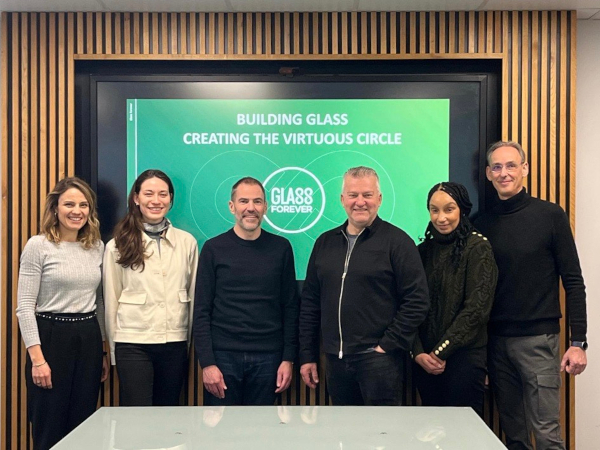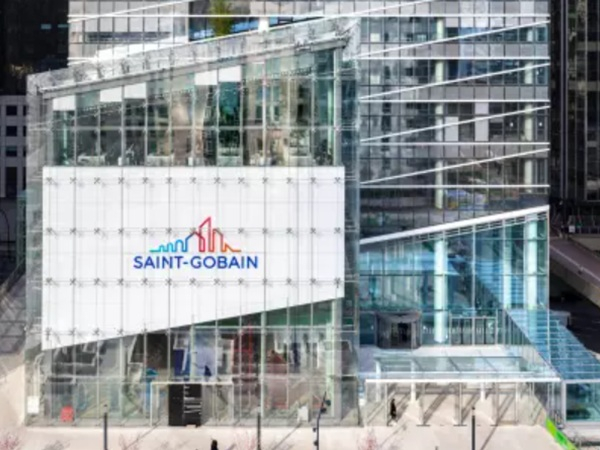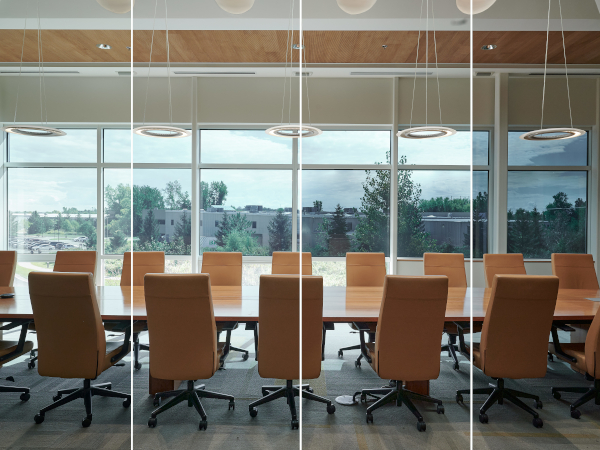Date: 16 October 2015
For its 350th anniversary, the Group has created four traveling futuristic pavilions that highlight its capacity for innovation and its exceptional expertise in materials, especially in building materials.After Shanghai (China) in January, São Paulo (Brazil) in April and Philadelphia (United States) in June, Paris marks the last stop of the temporary pavilions’ world tour. The exhibition will be open to the general public every day from 10:00 am to 6:00 pm (10:00 pm on Saturday and 8:00 pm on Sunday) from October 15 to 31, 2015. Entry is free.
With the “Future Sensations” pavilions, Saint-Gobain is echoing the tradition of the great industrial exhibitions in which the Group has participated since the 19th century. The four Future Sensations pavilions are a tribute to the Saint-Gobain pavilion presented at the Paris International Exposition in 1937 in which visitors were able to walk on glass for the first time thanks to the invention of tempered glass. Place de la Concorde, one of the most beautiful squares in Paris, is an extremely symbolic place within the perspective from the Louvre Pyramid to the Grande Arche in La Défense, two of Saint-Gobain’s emblematic achievements.
“It is with great pride that we are celebrating our 350th anniversary. We are the oldest company in the Paris Bourse’s CAC 40 index, and one of the oldest industrial companies in the world. It was my wish that this unique event be an opportunity to showcase a Group that knows how to project itself into the future. It has been a rich year of events around the world.
I acknowledge the enthusiasm of our teams, customers and visitors who have explored the “Future Sensations” pavilions in Shanghai, São Paulo, Philadelphia and now at Place de la Concorde in Paris, where I hope as many people as possible will come and celebrate our anniversary with us,” declared Pierre-André de Chalendar, Chairman and Chief Executive Officer of Saint-Gobain..jpg) The LISTEN pavilion evokes the Group’s acoustic performance materials. This "padded" cube is perfectly sound-insulated and provides a true voyage between complete silence and the sounds of a bustling city. This pavilion’s external façades change color after nightfall.
The LISTEN pavilion evokes the Group’s acoustic performance materials. This "padded" cube is perfectly sound-insulated and provides a true voyage between complete silence and the sounds of a bustling city. This pavilion’s external façades change color after nightfall.
Saint-Gobain Products
The LISTEN pavilion is coated with Weber brand render. ECOPHON Akusto™ Wall panels are used for acoustic absorption..jpg) The CREATE pavilion is an ode to audacity. Its spiral staircase is an architectural feat. By night, its sharp edges are outlined with LEDs blurring the structure so it seems to climb into infinity.
The CREATE pavilion is an ode to audacity. Its spiral staircase is an architectural feat. By night, its sharp edges are outlined with LEDs blurring the structure so it seems to climb into infinity.
Saint-Gobain Products
The CREATE pavilion is coated with Fabrasorb® material, which is normally used as an acoustic membrane. ONIRYS™ fabric, interweaving optical fiber and fiberglass, illuminates the surfaces of the interior walls..jpg) The COLOR pavilion is a carousel of glass. It is a kaleidoscope that colors its environment. It is also an interplay between the glazing of yesterday and that of today: Saint-Gobain’s glassmaking expertise in all its infinite forms.
The COLOR pavilion is a carousel of glass. It is a kaleidoscope that colors its environment. It is also an interplay between the glazing of yesterday and that of today: Saint-Gobain’s glassmaking expertise in all its infinite forms.
Saint-Gobain Products
The COLOR pavilion uses both hand-blown glass made using traditional methods at La Verrerie de Saint-Just, and Glassolutions laminated glass incorporating fabric..jpg) The LOOK pavilion is a tribute to Saint-Gobain's time-honored tradition of glassmaking. It is composed of LED-embedded mirrors and changes aspect. By day, its façade reacts to the changing skies above. By night, it becomes a perpetually changing cube of light. Once inside, the visitor almost feels suspended in space and time, traveling through the history of Saint-Gobain.
The LOOK pavilion is a tribute to Saint-Gobain's time-honored tradition of glassmaking. It is composed of LED-embedded mirrors and changes aspect. By day, its façade reacts to the changing skies above. By night, it becomes a perpetually changing cube of light. Once inside, the visitor almost feels suspended in space and time, traveling through the history of Saint-Gobain.
Saint-Gobain Products
The LOOK pavilion uses a selection of five types of glass supplied by Saint-Gobain Glass and Glassolutions. Extra-flint, this glass is noteworthy for its low iron oxide content and high level of light transmission.
A fifth “corporate” pavilion, the Saint-Gobain pavilion, provides an overview of the Group's history, businesses and strategy.
In total, 26 Saint-Gobain products are used in the four pavilions. Each pavilion weighs between 20 and 50 metric tons. Disassembled, the pavilions pack into 1,000 cases stowed in 24 containers and transported by ship. Forty people take 10 days to assemble the four pavilions. During their world tour, the pavilions traveled more than 50,000 kilometers by ship. Almost 300,000 people have visited these temporary structures since Shanghai.
To design the four pavilions, Saint-Gobain worked with FC2 Events and the artist Bruno Tric.
Consult the visitors’ guide to the pavilions:
https://www.saint-gobain.com/sites/sg_master/files/saintgobain_
350_sensations_futures_fr.pdf
Download the visuals :
https://www.saint-gobain.com/fr/presse/phototheque-350
SAINT-GOBAIN’S 350 YEARS
In 2015, Saint-Gobain is celebrating its 350th anniversary. An exceptional event that the Group is celebrating by promoting its history but with its sights set firmly on the future. The celebrations have included some significant high points: the world tour of the “Future Sensations” pavilions, a postage stamp issued by the French postal service La Poste, an online exhibition (www.saint‐gobain350years.com), the anniversary book, a game for mobile devices and an anniversary day on October 15.
Louis XIV signed the Letters Patent creating the Manufacture royale des Glaces in October 1665. Around the world, on October 15, 2015, Saint-Gobain employees will be celebrating this event. This day signifies the link that exists between all Saint-Gobain employees. Each country and each site will celebrate the 350th anniversary in its own way: open house days, customer events, competitions, exhibitions, etc. Former employees will be invited to attend the celebrations through their networks (Retiree Clubs in particular).
350 YEARS OF HISTORY
17TH CENTURY: The origins Louis XIV, prompted by his Finance Minister Jean-Baptiste Colbert, created the Manufacture des Glaces in 1665 to triumph over rival Venice in the mirror-making industry. The Group's first emblematic achievement was the delivery of the mirrors for the Hall of Mirrors in Versailles. At this point, Saint-Gobain became part of the history of France.
18 TH & 19TH CENTURIES: The birth of a great company
In the 18th century, mirrors were all the rage and their price became increasingly affordable. Benefiting from orders placed by the King and homeowners, the Manufacture, which employed more than a thousand workers, modernized and became increasingly prosperous throughout the century. In the 19th century, faced with strong international competition, Saint-Gobain diversified its business to include chemicals. At the end of the century, the chemicals and glassmaking activities were equally important. The Manufacture royale des Glaces benefited from the rise of a new form of iron and glass architecture, mainly used for large public buildings, such as markets, railroad stations, city arcades, and so on.
20TH CENTURY: The construction of today's Group from glassmaking company to multinational
By now, Saint-Gobain had turned its attention to all types of glass products (bottles, optical glass, glass fiber, etc.). The automobile revolution and modern architecture with its vast expanses of glazed surfaces provided the company with new outlets. In 1970, Saint-Gobain merged with cast iron pipe manufacturer Pont-à-Mousson. This led to a new style of management, nationalization (1982) followed by privatization (1986), increased efforts in research, the arrival of new countries, and a time for divestitures and acquisitions. Major acquisitions included Norton in 1990, which positioned Saint-Gobain in high-technologycontent materials (abrasives, ceramics and plastics). The acquisition of Poliet (Point.P, Lapeyre and Weber) in 1996 allowed the company to enter the world of building distribution materials.
21ST CENTURY: The reference for sustainable habitat
Saint-Gobain has focused its strategy on sustainable habitat while continuing to serve its many industrial markets. Leveraging its many sites around the world, the Group is continuing to grow in emerging countries, and it is making significant acquisitions to extend its building materials distribution network in Europe and to complete its product portfolio (the acquisition of British Plaster Board in 2005 - gypsum and plasterboard - and Maxit in 2007 – industrial mortars).
ABOUT SAINT-GOBAIN
In 2015, Saint-Gobain is celebrating its 350th anniversary, 350 reasons to believe in the future. Backed by its experience and its capacity to continuously innovate, Saint-Gobain, the world leader in the habitat and construction market, designs, manufactures and distributes high-performance and building materials providing innovative solutions to the challenges of growth, energy efficiency and environmental protection. With 2014 sales of €41 billion, Saint-Gobain operates in 66 countries and has over 180,000 employees. For more information about Saint-Gobain, visit www.saint-gobain.com and the twitter account @saintgobain or download the “Saint-Gobain Shareholder” application for tablet and smartphone.













Add new comment